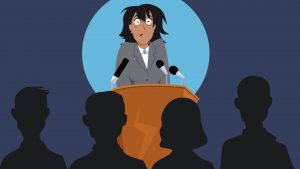Are you suffering from social anxiety ?
A quick assessment asks a few questions to determine whether a person has a high chance of developing a social anxiety disorder, also known as social phobia. Like all disorders, the clinical signs of social anxiety must be interpreted in a culturally appropriate manner. (Clarvit, et al., 1996).
If you want to know if social anxiety concerns you, you can answer these 4 questions :
- Are you very concerned about being or appearing embarrassed?
- Is being or appearing embarrassed or stupid your greatest fear and does this fear cause you to avoid talking to people or participating in group activities?
- Are you afraid to talk to others, even in small groups?
- Do you avoid social activities if you are likely to be observed more than usual, to be the focus of attention?
If the majority of of your answer is Yes, you may have social anxiety.
When social anxiety becomes social phobia
There are different subtypes of specific phobias :
- Animal type phobias: fear of spiders, birds…
- Natural environment type phobias: fear is induced by elements of the natural environment such as height, water…
- Blood or injection or accident type phobias: Fear is triggered by the sight of blood, accidents, injections or other invasive medical procedures.
- Situational type phobias: fear is induced by a specific situation such as social interactions, blushing in public, elevators, flying, enclosed places or large spaces.
- Other types of phobias: fear is induced by other situations such as fear of choking, fear of contracting a disease, fears that some children have about loud noises, and fear of disguised characters such as clowns.
The essential feature of social phobia is a significant fear or anxiety in social situations in which the person can be observed by others.
These are frequently social interactions such as meeting unknown people, situations in which the person can be observed eating or drinking, situations in which he or she performs in front of other people.
- The dominant thoughts are fear of being evaluated negatively, embarrassed, humiliated, rejected or offended.
- The emotion that dominates is fear.
- Dominant behaviors are avoidance of the situation that triggers the anxiety.
And how is it treated?
Phobias, like all anxiety disorders, are best treated with Cognitive Behavioral Therapy (CBT). In severe or more complicated cases, it is possible to reinforce the effects of psychotherapy with biological treatment such as SSRI antidepressants. The success rate of this type of psychotherapy is quite good.
The baseline test for social anxiety or phobia, the Liebowitz Social Anxiety Scale.
A brief presentation of the disorder and the therapy
[vc_video link=’https://youtu.be/kUWKVqP2kjY’]
A detailed presentation of the disorder and therapy
[vc_video link=’https://youtu.be/56OPZ1zcvWc’]


